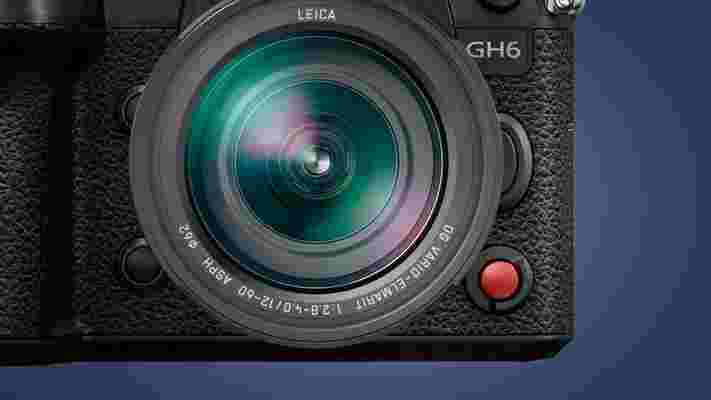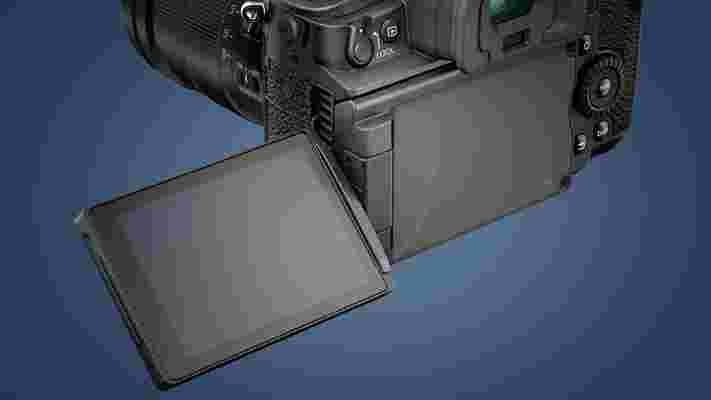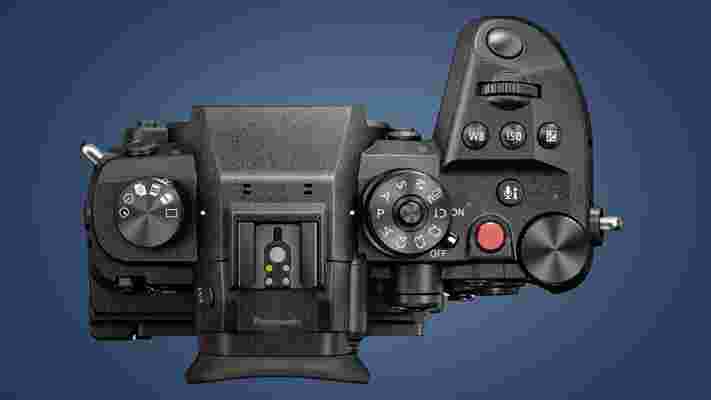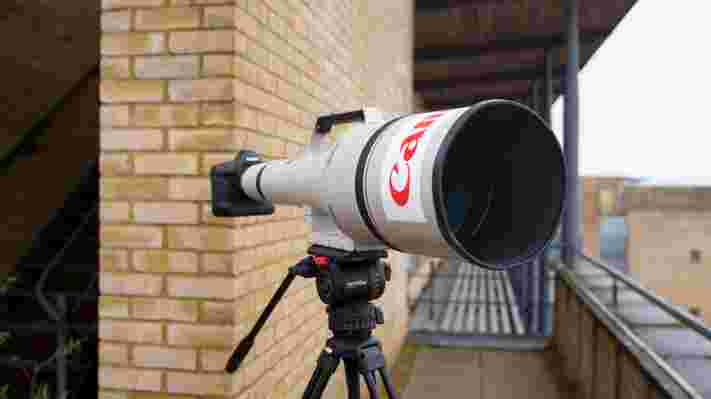Nintendo Switch Lite owners may want to think twice before purchasing Switch Sports, as Nintendo is dissuading those who own the handheld console from purchasing the game.
An online playtest for Nintendo Switch Sports is taking place this weekend, but a disclaimer on the app says that the "Nintendo Switch Sports Online Play Test is not compatible with Nintendo Switch Lite", as spotted by Nintendo Life .
The compatibility warning might seem obvious, considering that the Nintendo Switch Lite cannot be docked to your TV and doesn’t include detachable Joy-Con controllers , but Nintendo Switch Sports can only be played in TV and Tabletop mode.
To play Nintendo Switch Sports on a Switch Lite, users will need to have a pair of Joy-Con controllers to hand, and a way of propping up the console as it doesn’t have a kickstand. You’ll then also have to wrestle with the fact you’re stuck playing the game on a 5.5-inch screen, which isn’t ideal when you’ll be actively moving around.
For that reason, it seems that Nintendo wants to temper buyers’ expectations. The game will obviously be far more enjoyable when played on a TV, just like Wii Sports was back in the day, but if you really want to play it on the Switch Lite, you can.
This isn’t the first time Nintendo has discouraged people from buying certain titles on the Switch Lite. 1-2-Switch, Super Mario Party , Ring Fit Adventure , and Nintendo Labo all require separate Joy-Con controllers as they don’t support Handheld mode.
Analysis: Nintendo Switch Lite has its limitations

The Nintendo Switch Lite is the company’s handheld-only version of the Switch. You can’t dock it to play on a TV, and the Joy-Con cannot be removed, which means you’re strictly limited to playing games that support Handheld mode.
The console also has a few other caveats, such as no HD Rumble, which is Nintendo’s take on haptic feedback, and a battery life of three to seven hours, which is less than that of the Nintendo Switch 2019 model and the new Nintendo Switch OLED .
Still, the Switch Lite’s smaller form factor and more robust design make it an ideal choice for younger gamers and those who simply never docked their Switch. It’s a sensible addition to Nintendo’s Switch lineup, albeit one that eschews the hybrid nature of the console that can lead to compatibility issues, like we’re seeing with Nintendo Switch Sports.
Nintendo Switch Sports is due to release on Nintendo Switch on April 29, 2022.
Still not bought a Switch yet? Check out the best Nintendo Switch Lite deals below in your area.
7 things we love about the Panasonic Lumix GH6 (and 3 things we don't)
The Panasonic Lumix GH6 has finally landed – and we've been putting the video powerhouse through its paces ahead of our full review. It's impressed us so far, but there are still lots of tests to be done. So we thought we'd round up some of our favorite GH6 features so far, plus a few of the downers, to help give you an idea of whether it's shaping up to be the camera for you.
Some of the obvious upgrades from the Panasonic GH5 and GH5S include a new 25.2MP sensor, which is the highest resolution we've seen so far on a Micro Four Thirds camera, and fancy modes like being able to shoot in 4K/120p or with anamorphic lenses.
But we wanted to pick out some of the smaller touches that this feature-packed camera brings to the table, from its design to some of its practical benefits compared to full-frame cameras. So based on the testing we've done so far for our hands-on Panasonic Lumix GH6 review , here are the things we like (and don't like) about Panasonic's long-awaited video camera.
1. Its bonus record button

The GH6's design might not be original, but your camera doesn't need to win the Turner Prize – it needs to get out of the way so you can create photos and video. Panasonic has included a lot of nice touches to help the GH6 do this, from its big, textured grip to its handy audio button, but one of our favorites is the record button on the front.
You get the usual record button on the top plate, and the shutter can also start recording. But it's the second record button on the front next to the lens mount (alongside the handy tally lamp) that's particularly useful for vloggers or one-person film crews. Expect to see this appear on more video-centric cameras in the future.
2. The super-versatile screen

Flip-out screens are a must for video cameras, and the Panasonic GH6 has one of the best we've used. Just like the Panasonic Lumix S1H , its 1.8-million dot rear LCD is attached to a tilting plate that extends back from the camera body, which brings a couple of benefits.
One is that you can move the screen away from any of the ports on the side, so it doesn't interfere with the cables from external microphones or monitors. But the other is that you can tilt the screen up and remain in line with the camera and lens, unlike screens that flip out to the side and push you off axis from what you're shooting.
3. Internal ProRes recording

The GH6 isn't the first camera to let you record in the Apple ProRes internally, but it is one of the few to join the Blackmagic Pocket Cinema Camera 6K Pro in doing so. The benefit for video editors is that ProRes files, despite their size, are far easier on a computer's CPU than a camera's native H.264 and H.265 formats, and are supported by most editing programs, too.
We're talking ProRes 422 here, rather than ProRes Raw, but it's a great editing codec for Mac users in particular, even if it doesn't boost the quality of your video footage. You can also shoot in ProRes on the Nikon Z9 , but that camera is in another stratosphere of cost and size compared to the GH6.
4. Unlimited record times
Unlike its predecessors, the Lumix GH6 has a built-in cooling fan, and the result is – in theory – the complete absence of recording time limits in any of its video modes. This isn't a unique skill, as rivals like the Sony A7S III similarly lacks heat-based limits in most of its modes (aside from higher frame-rates like 60fps/120fps). But it is another practical benefit of the GH6's smaller sensor.
Of course, unless you use external power, your clips will be limited either by the GH6's battery or your card filling up. It's a slight shame that directly recording to an SSD won't be available until a firmware update, but it does mean you can shoot 4K/60p in 10-bit 4:2:2 without constantly worrying about shutdowns.
5. Uncropped video
A common downside of mirrorless cameras is that, when shooting video, they tend to use a cropped portion of their sensors, which impacts both the angle of view and image quality. Not so on the GH6 – it's able to use the entire 4:3 sensor, which means uncropped video in nearly all modes.
The only exception to this are some of the GH6's anamorphic modes, but in all other resolutions and frame-rates you'll get the original viewing angle of your lens and image quality that should theoretically approach APS-C cameras in their cropped modes.
6. Dynamic Range Boost
It sounds like the kind of feature that marketing departments invent to steer the narrative away from a camera's weakness, the GH6's Dynamic Range Boost mode is genuinely interesting. In a similar way to Canon's DGO (Dual Gain Output) sensor tech, it combines different parts of an exposure to give you a wider dynamic range.
Unlike the dual native ISO tech we've (unofficially) seen on cameras like the Sony A7S III, Panasonic's DR Boost combines the best parts of two different ISO sensitivities – rather than switching between them – to, yes, boost the dynamic range of your photos and video. We're looking forward to testing this more, but it should mean much more information to recover from shadows and highlights.
7. Handheld 100MP photos
It isn't just video shooters who get all the fun on the GH6 – there's also now a handheld version of the High Res Shot mode we've seen on previous GH-series cameras. This won't be anything new to Olympus fans, but the 100MP resolution of resulting shots will be – that's possible thanks to the GH6's new 25.2MP sensor, the highest on a Micro Four Thirds camera so far.
The GH6's new in-body stabilization system, which now promises an impressive 7.5-stops of compensation, is able to combine four of those 25MP snaps into one massive one, ready for printing and framing. This has worked well in our tests so far and really helps the camera's smaller sensor compete with its larger rivals, in both resolution and noise performance.
1. It's chunky for an MFT camera
In the decision between cameras size and features, Panasonic has definitely plumped for the latter on the GH6 – and that means it's pretty large for a Micro Four Thirds camera. In fact, it's actually bigger and deeper than the Sony A7S III , as you can see above.
Part of that girth is down to the GH6's built-in cooling fan, though, so it still weighs in at a pretty reasonable 823g. And you do also get the benefit of smaller Micro Four Thirds lenses – so, like the rest of the GH series, it remains a fine choice for run-and-gun filmmakers.
2. It still has contrast-only autofocus
Ah yes, that familiar old chestnut: autofocus. Panasonic cameras have long resisted the charms of phase-detect or hybrid AF systems, instead persisting with contrast-detect systems that have an added layer of smarts that the company calls 'Depth by Defocus'.
So far, our tests suggest the GH6's autofocus system is broadly similar to the GH5 II – which means it's improved from the early days, but not quite in the same ballpark as the latest AF systems from Sony and Canon. Panasonic has opened up about why the GH6 lacks a more modern autofocus setup , but it does remain a possible limitation if you regularly shoot moving subjects or do a lot of solo vlogging.
3. Limited photo modes
The Panasonic GH6's photo skills would look pretty decent if another Micro Four Thirds camera, the OM System OM-1 , hadn't just landed with some fancy modes like 50fps burst shooting and upgraded computational tricks.
The contrast between the two seems more stark when you consider that Panasonic appears to have removed some photo-centric modes like its 6K photo mode (which is ideal for wildlife shooting) and in-camera focus stacking on the GH6. It's very much a video camera and the GH6's resolution is handy for stills, but it appears to have left the photography crowd to the OM-1.
This new Canon telephoto lens costs more than the downpayment on your home
Canon has launched the world's longest lens for mirrorless cameras, with its 1200mm super-telephoto looking like a dream companion for wildlife photographers with extremely deep pockets.
The RF 1200mm f/8L IS USM, which succeeds the legendary EF 1200mm f/5.6 L USM, has been built for Canon's latest mirrorless cameras like the Canon EOS R3 , and has was announced alongside the new RF 800mm f/5.6L IS USM.
Both lenses are, understandably, pretty huge, although they're considerably smaller and lighter than their DSLR-based predecessors. The RF 800mm f/5.6L IS USM tips the scales at 3.14kg and measures 432mm long, while the RF 1200mm f/8L IS USM actually isn't much bigger, measuring just over half a meter and weighing in at 3.34kg – that's only a fifth of the weight of the classic EF 1200mm f/5.6 L USM.
Part of the reason for these relatively compact dimensions, for lenses with these focal lengths at least, is that both have similar designs to existing RF lenses (the RF 400mm and RF 600mm), only with some additional rear elements.
Their respective focal lengths of 800mm and 1200mm aren't even their maximum limits either, as both are compatible with Canon's RF 1.4x and RF 2x extenders. Use the latter on the RF 1200mm F8L IS USM, and you can photograph subjects from an incredible 400m away.
While both lenses will need a tripod to keep them steady in most situations, they do include built-in image stabilization to give you a helping hand. The RF 800mm f/5.6L IS USM promises to provide 4.5 stops of compensation, while the RF 1200mm f/8L IS USM offers slightly less at four stops.
Canon's new lenses have been designed for professional sports, wildlife and news photographers, but even they might baulk at the price tags. Both lenses will be available from late May, with the RF 800mm f/5.6L IS USM costing $16,999 / £19,099 / AU$29,799 and the Canon RF 1200mm f/8 L IS USM priced at $19,999 / £22,449 / AU$35,099.
Analysis: long shots in every sense

Canon's new lenses are arguably as much a flag-waving exercise for its RF system as they are practical tools for professional photographers – particularly at these prices.
It's no coincidence that arch-rival Nikon announced its new Z 400mm f/2.8 super-telephoto lens last month, and most photographers would likely be better off buying an RF 400mm f/2.8 or RF 600mm f/4 lens with an RF 2x Extender, to get an 800mm or 1200mm reach for far less money.
That said, sports and wildlife photographers will undoubtedly be keen to rent and test-drive these new super-telephotos. This kind of lens is ideal for compressing backgrounds and removing distractions around your subject, and they'll no doubt work well with Canon's excellent AF system.
The RF 1200mm f/8 L IS USM is also more practical, and less niche, than its spiritual predecessor, the EF 1200mm f/5.6 L USM. Canon initially only made two copies of that lens (which started life with an FD-mount), before it was converted for the EF mount.
Last year, one of the few examples of the EF 1200mm was sold in Germany for $580,000 / £417,000. So while Canon's new lenses are certainly niche, they do at least only cost the same as a car, rather than a super-yacht.